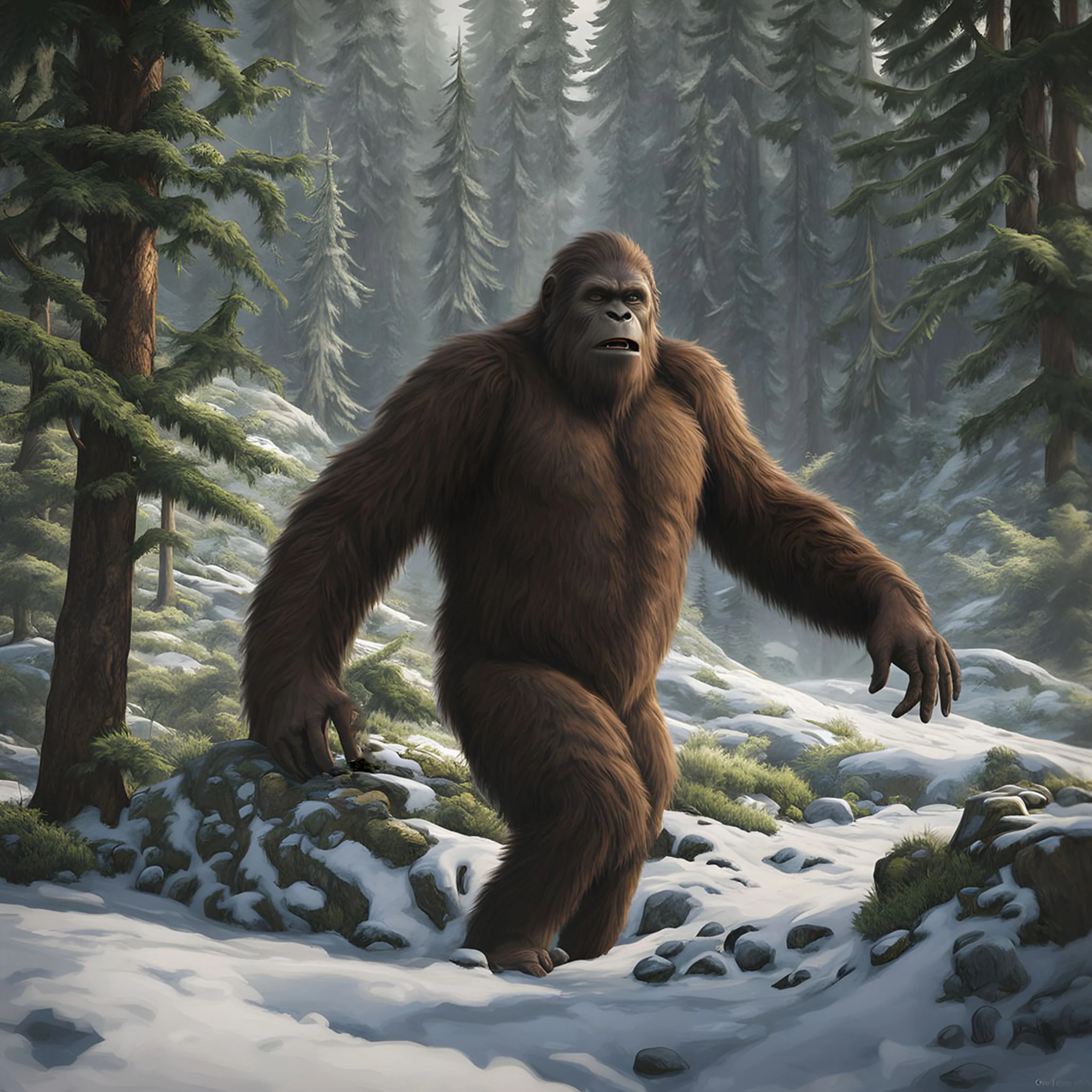The Legend of Bigfoot: A North American Enigma

What is Bigfoot?
The legend of Bigfoot, is one of the most well-known and long-lasting cryptids in North American mythology, has been reported for centuries. Many accounts describe a big, hirsute, ape-like creature populating remote forests, specifically in the Pacific Northwest area of the USA and Canada.
Origin of Bigfoot and Sasquatch
The term “Bigfoot” is typically used mutually with “Sasquatch,” stemming from indigenous North American folklore. The existence of Bigfoot still remains unproven and subject to uncertainty. The legend has continued and grown gradually, ending up being a social icon that penetrates popular culture and influences fascination among fanatics.
Legend of Bigfoot in Popular Culture and Subculture
From Novels, stories to Movies, the Bigfoot Legend has been the topic of numerous subjects for fictions. Additionally, the search for the existence of Bigfoot has actually given rise to different subcultures of scientists, enthusiasts, and investigators. Who are committed to revealing the fact behind the stories of Bigfoot.
Encounters with Bigfoot
In the late 1800s and throughout the 1900s, North American settlers began sharing accounts of encountering Bigfoot. Reports included occasional discoveries of footprints, random sightings, and a handful of blurry photographs and videos, all contributing to the enigma. Witnesses have described Bigfoot as a tall, muscular figure resembling either a large ape or a hairy human. Whose height is exceeding 8 feets. The debate on Bigfoot’s existence still persists. Dedicated organizations have emerged to investigate and record evidence of Bigfoot. The Research groups are frequently exploring the forests of the Northwest in search of conclusive proof.
Alternative Explanations on the Story of Bigfoot
Ecologist Robert Pyle suggests that the concept of human-like giants is a common thread throughout the folklore of various cultures. Expressing a need for “some larger-than-life creature” in their versions of folklore. These legendary creatures were often given distinct names in local languages. With many translating to “wild man” or “hairy man”, while others described specific behaviors attributed toaging for shellfish or uprooting trees. European folklore had many instances and tales of the “wild man of the woods”, a hairy, naked figure with exposed skin only on the face, hands, and feet. These wild people range from solitary hermits to monstrous beings. As European settlers migrated to North America, with them the tales of Folklore has now become the part of North American Folklore.
The Patterson-Gimlin Film of Bigfoot
On October 20, 1967, Roger Patterson and his associate Robert Gimlin were capturing footage for a documentary about the legendary creature Bigfoot in Northern California’s Bluff Creek region. According to their account, the duo unexpectedly encountered a Bigfoot and managed to record the encounter on film. The resulting 59.5-second video, known as the Patterson-Gimlin film, has become an enduring symbol of Bigfoot folklore and a cornerstone of popular culture. To this day, the film remains a topic of intense examination, analysis, and controversy.
Specialists in relevant academic disciplines have generally concluded that the film lacks any real scientific significance, with many suggesting that it is likely a fabrication or deliberate deception.
Conclusion
Bigfoot remains a larger than life figure in North American folklore, fascinating creativities and inspiring inquisitiveness for generations. Whether as a cultural icon, a topic of preferred media, or a number of clinical inquiry and debate, Bigfoot personifies the human attraction with the unknown and the enduring power of myth and legend. As long as these stories remain to be informed, the legend of Bigfoot will certainly linger, reflecting our collective curiosity and the secrets that exist within the natural world.

